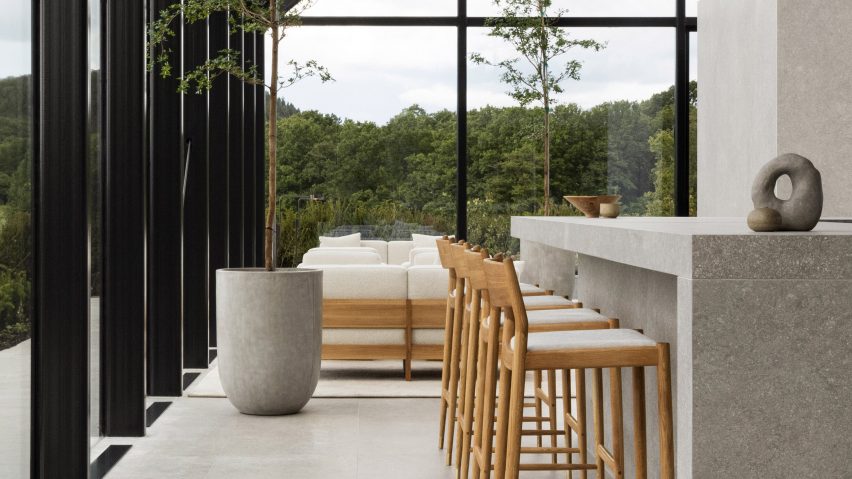
Norm Architects creates inside-out greenhouse restaurant in a Swedish meadow
Danish studio Norm Architects has completed Äng, a Michelin-starred restaurant in Sweden that features a glasshouse entrance and a subterranean wine cellar.
The restaurant is located in the middle of a meadow in Ästad Vingård – one of Sweden's largest vineyards.
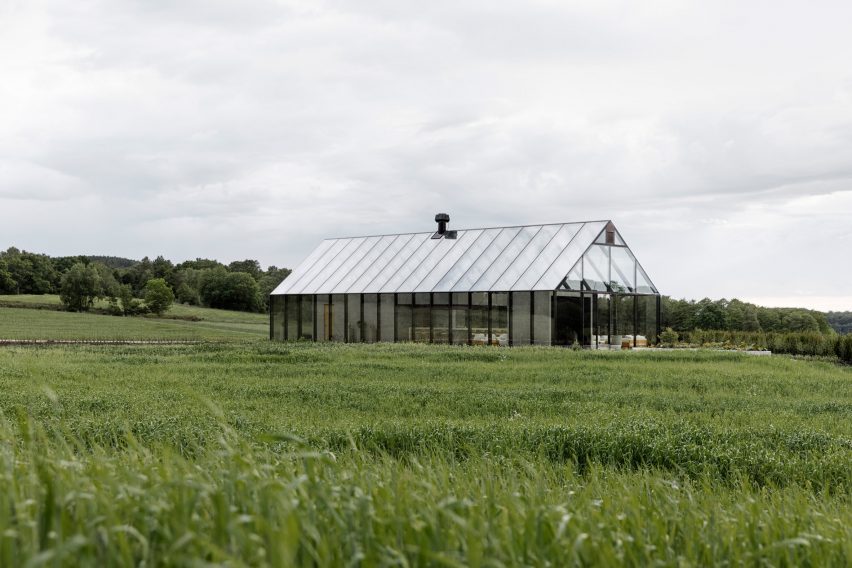
The main component of the restaurant is a minimal glass building supported by a steel structure. Its design resembles an inside-out greenhouse, with the steel structure on the inside and a smooth exterior that reflects its meadow surroundings.
Accessed via a stone pathway that winds through the grasses and crops, guests enter Äng through a glass door, where the stone flooring continues inside.
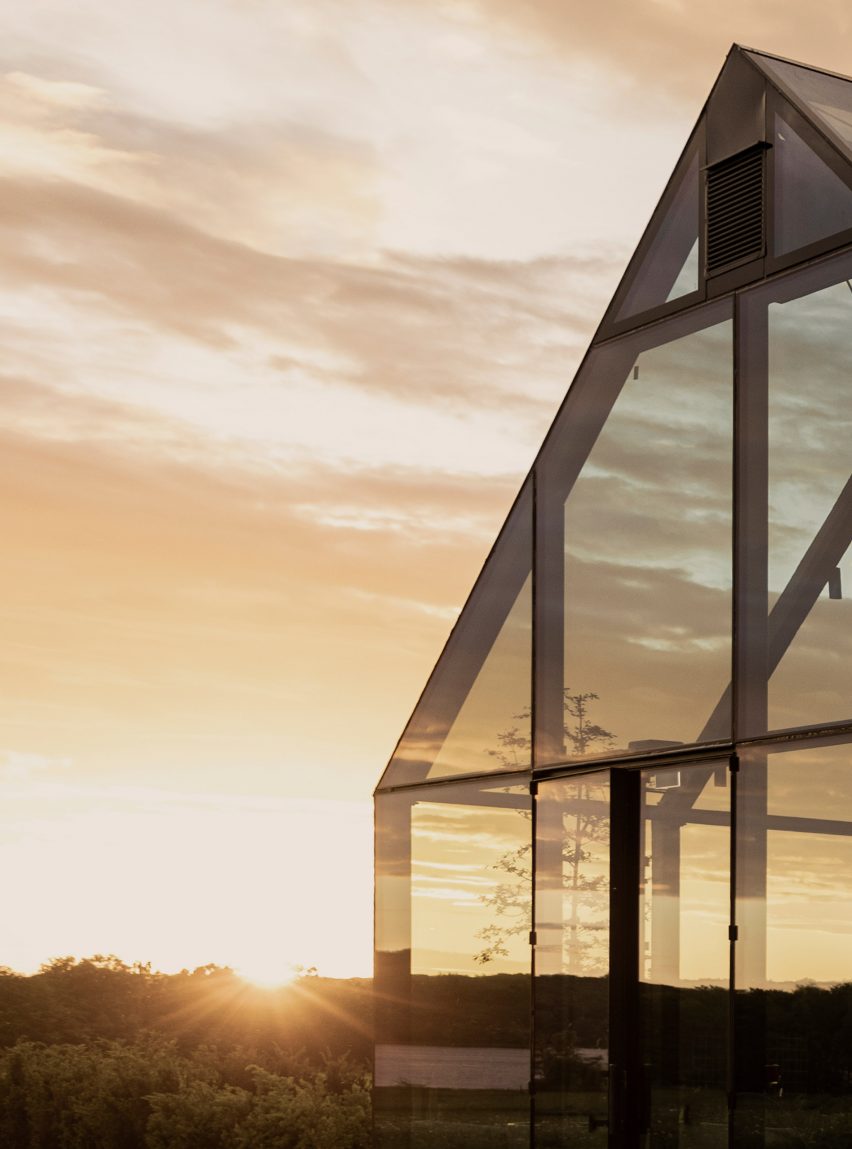
The entrance takes guests past an open kitchen with a stone counter and bespoke artworks of organic forms.
Inside, the glass building is designed to give diners the feeling that they are sitting in the middle of the field with nothing but clear skies overhead.
"With inspiration found in both the unspoiled Nordic nature surrounding the premises of Äng and Japanese sensibilities in design aesthetics and craftsmanship, the interior provides a holistic, sensory experience," said Frederik Werner, partner at Norm Architects.
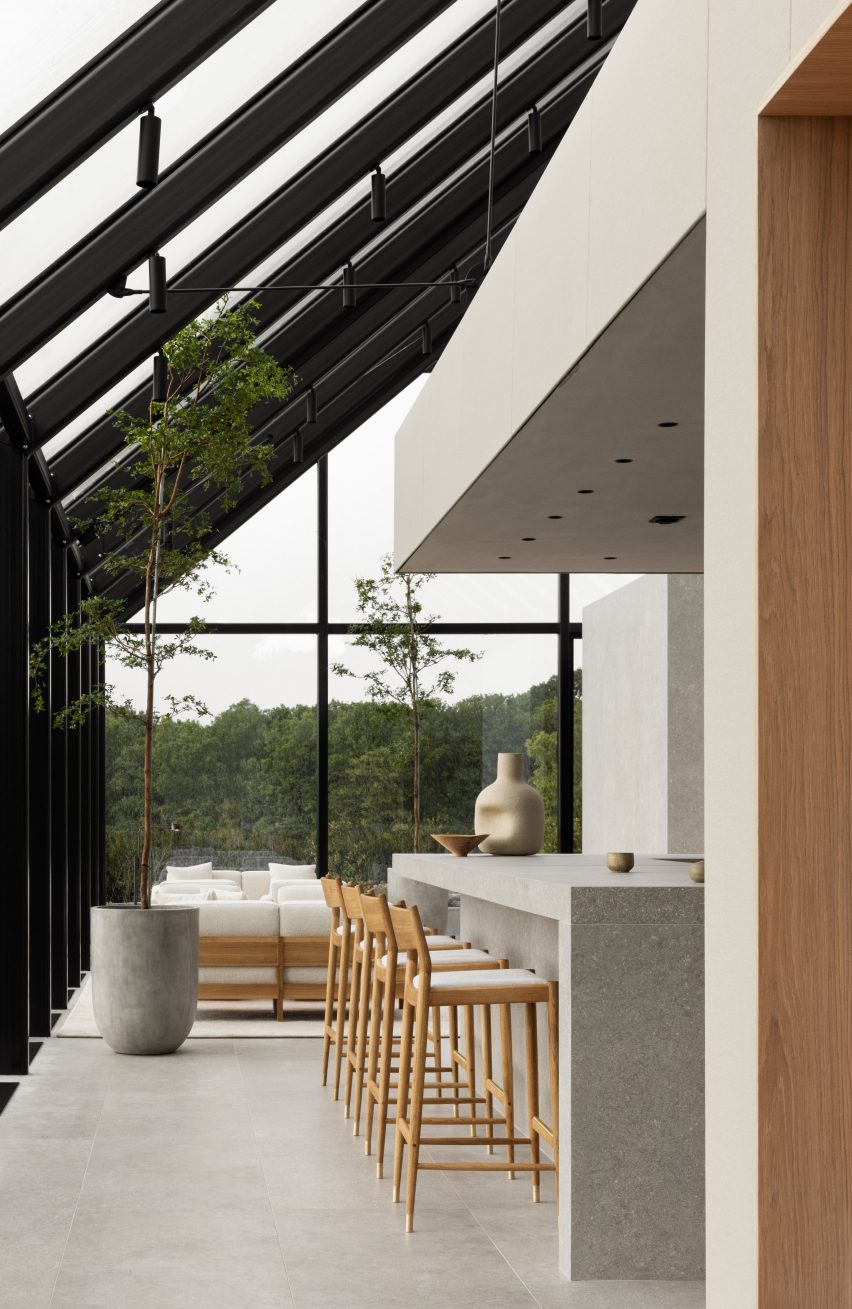
The interiors are furnished with oak furniture by Japanese brand Karimoku, for which Werner is the creative director, and wood and stone sculptures made by Norwegian artist Anders Pfeffer Gjengedal .
The furniture include the Äng lounge table, which was designed exclusively for the restaurant and constructed from solid oak.
Other bespoke pieces include an oak serving tray by Keiji Ashizawa and a solid wood trolley inspired by the umbrella and shoe racks by the entrance of Japanese temples.
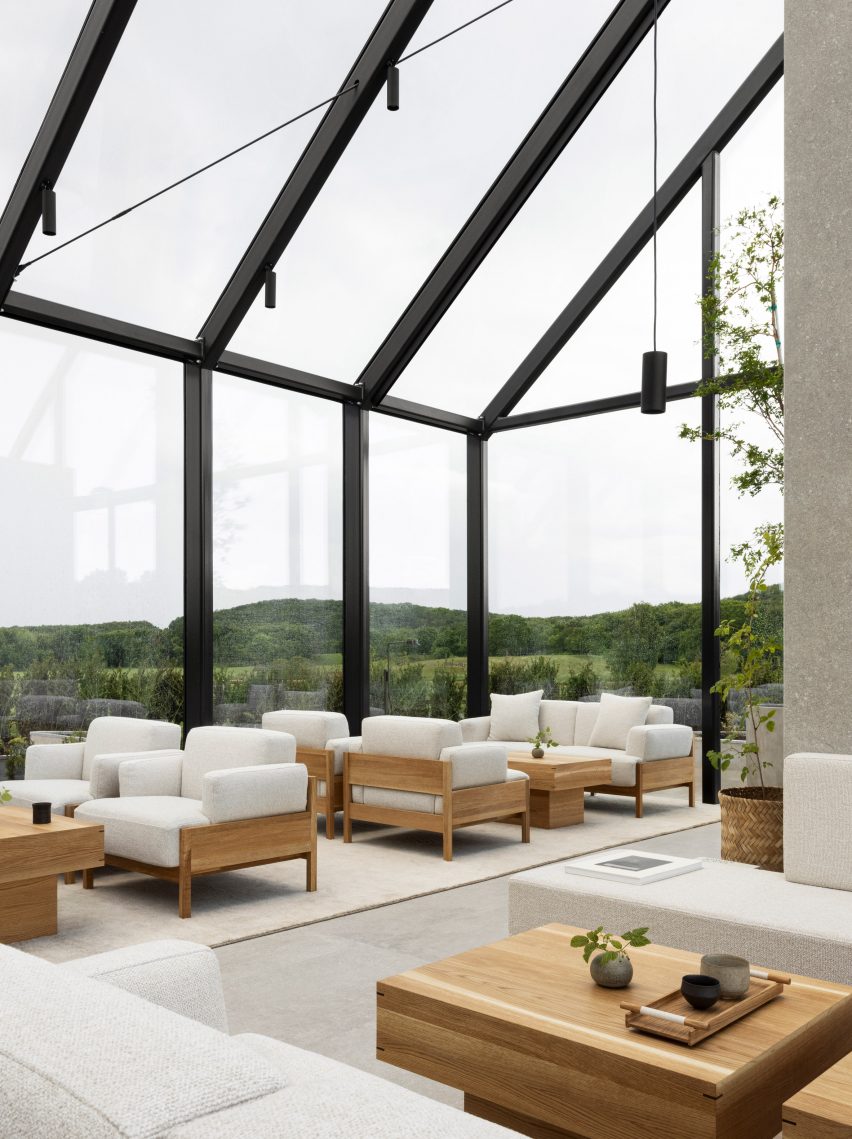
A range of tableware designed to complement the restaurant's atmosphere was created in collaboration with Sweden-based design studio Bonni Bonne.
The collection of plates and bowls are made from green wood, an ancient woodworking method that creates natural silhouettes and raw textures.
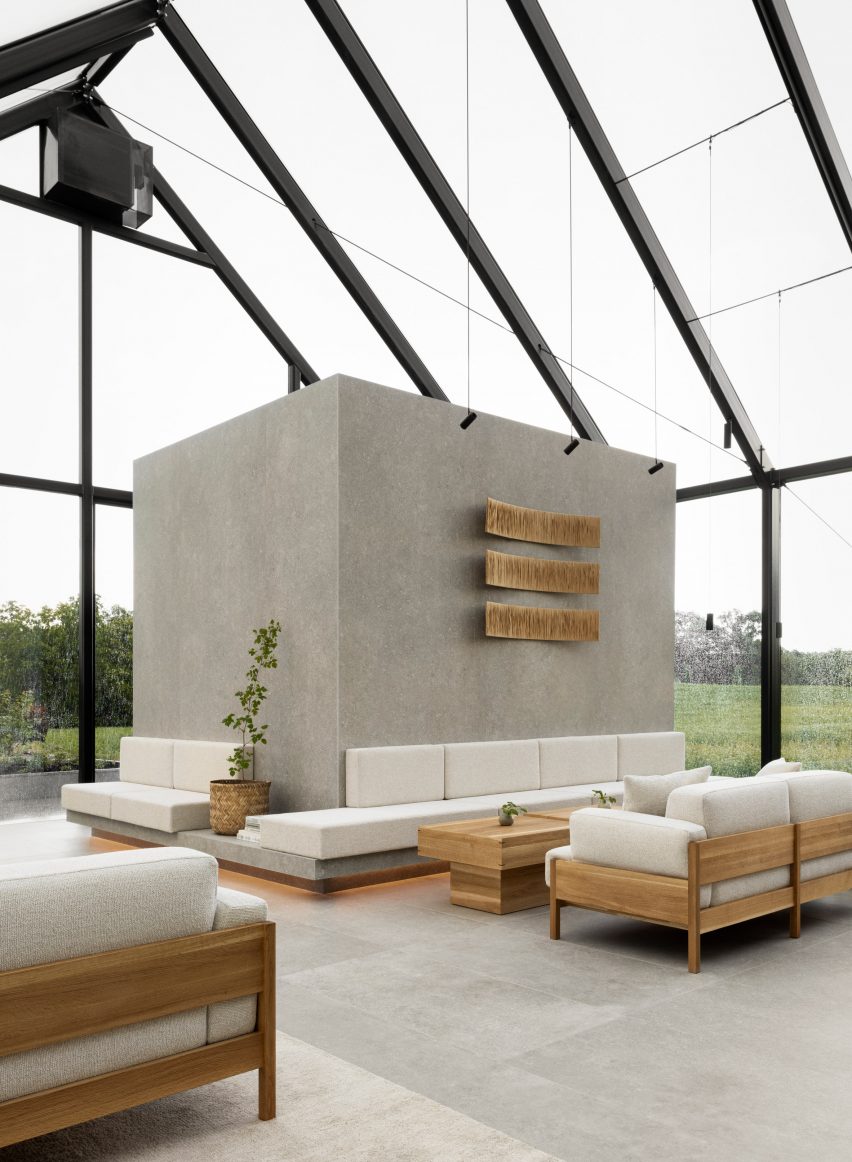
Artworks by Danish designer Sara Martinsen made from materials found in the forest are also displayed.
Norm Architects said its aim was to carefully balance every element of the design from architecture to design, lighting, taste, smell, and sound.
"The fundamental ambition behind the Michelin-starred Restaurang Äng is in many ways in line with Norm Architects' design philosophy of striking a delicate balance between all the sensory experiences that make up a space to create a harmonious setting, where all elements support one another," explained Norm Architects partner Peter Eland.
A series of stone sculptures from a quarry in Växjö, Sweden, reference the Japanese Karesansui gardens of raked sand and stone. These dry landscape gardens celebrate yohaku-no-bi, meaning the beauty of blank space.
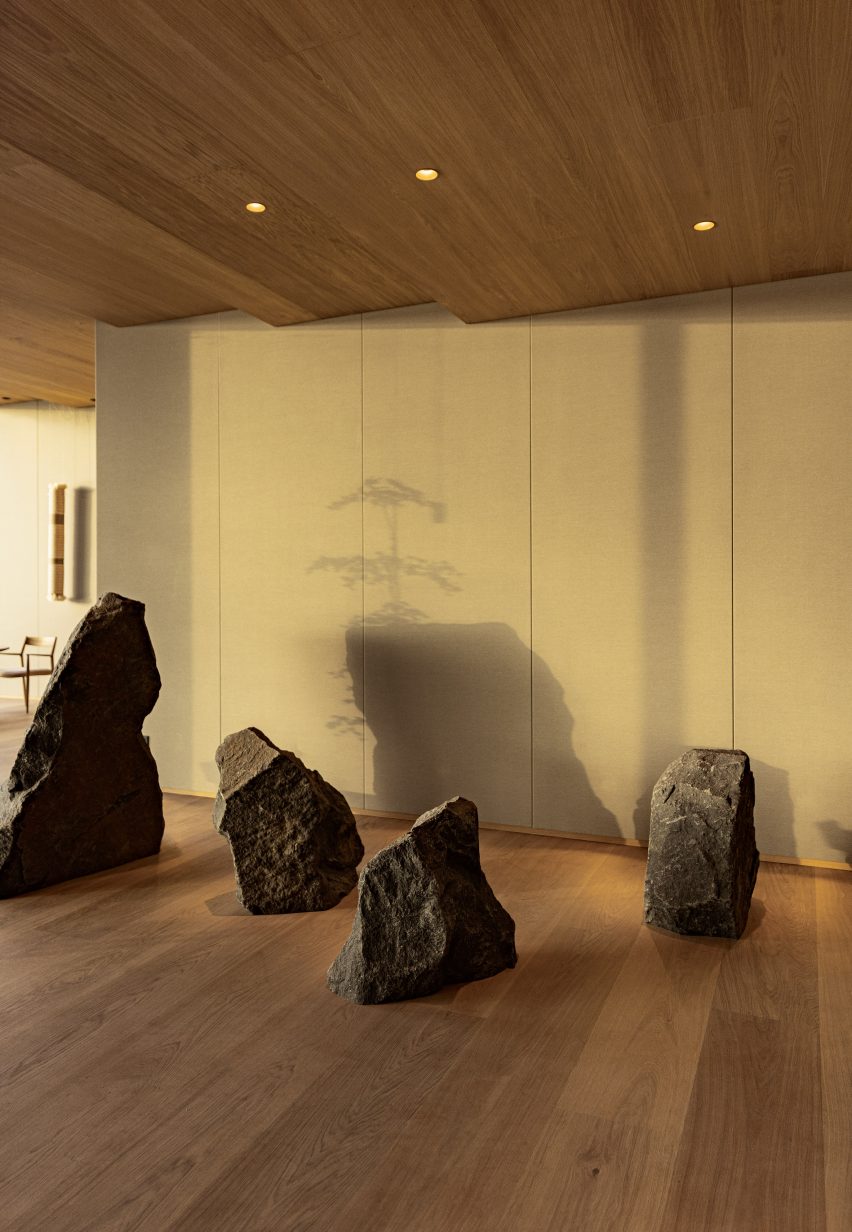
The interior also features discrete acoustic walls. Constructed from canvas, the studio specified the panels be made in a shade reminiscent of the jute sacks that are used to store grain.
Bespoke cabinetry is filled with sculptures and ceramics by Viki Weiland and Ulla Bang, both artists who work with curved, simple forms.
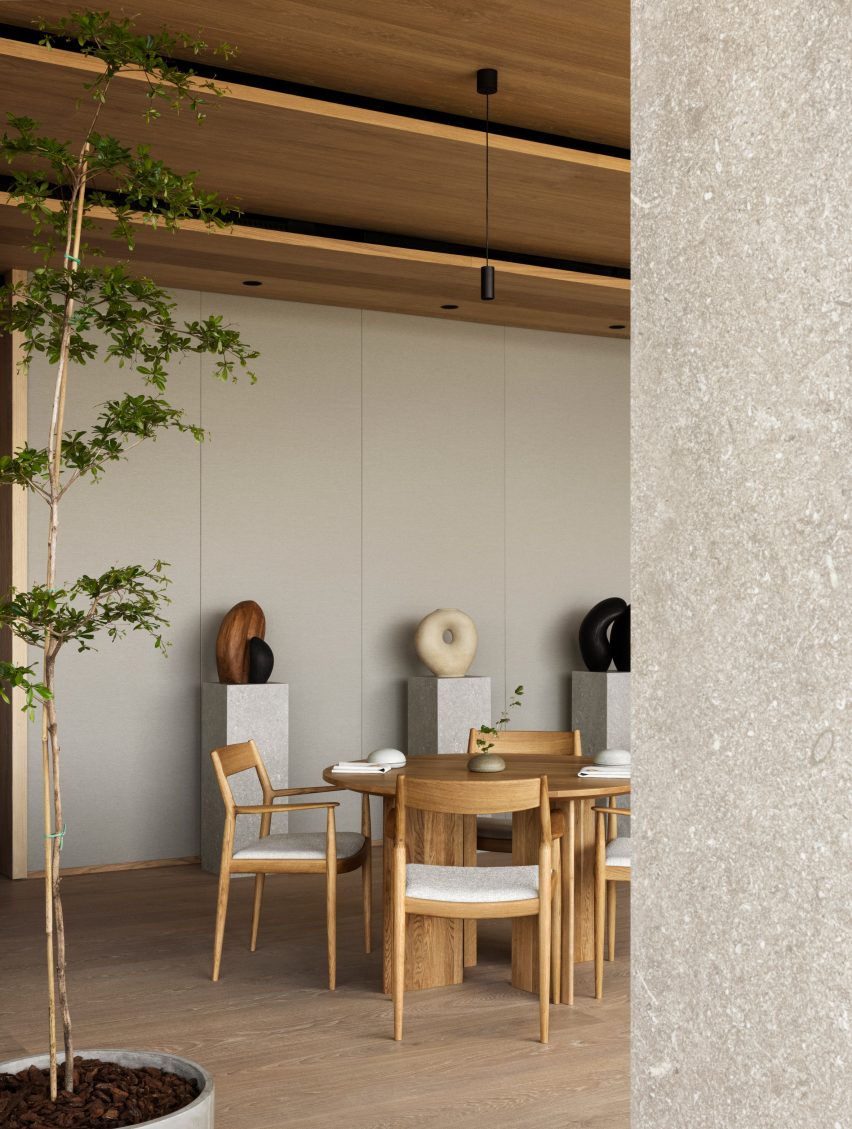
As well as the main restaurant spaces, Äng also has a hidden elevator that transports guests underground to a catacomb-like wine cellar with a dark lounge setting in its centre.
"With the changing of light, we play on the phenomenon of chiaroscuro; a technique from visual arts used to represent light and shadow as they define objects in order to achieve a sense of volume," said Jonas Bjerre-Poulsen, architect and founding partner at Norm Architects.
"When stepping into the shadows, the vision weakens while the remaining senses intensify. One automatically pays more attention to sounds, smells, tastes and touch and even the intuition and instinct are strengthened."
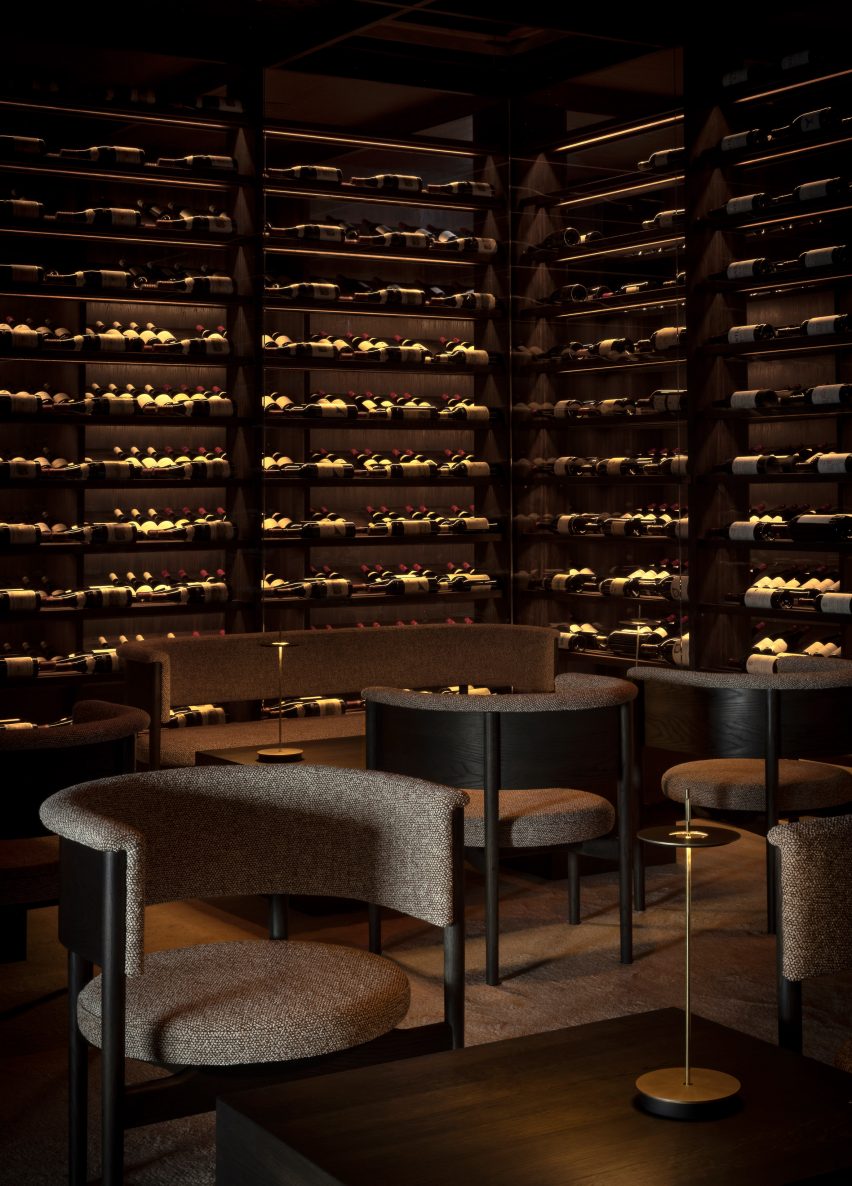
To emphasize the transitions from one atmosphere to another, the floor tiles in the wine cellar recall a brick floor to enhance the cave-like feel, while the main dining room has a wooden floor.
Founded in 2008, Norm Architects says its work builds on the traditions of Scandinavian design. Other recent projects by the Danish studio include a spa-like dental clinic modelled on art galleries, and a Swedish forest retreat "designed for a simple life".
The photography is by Jonas Bjerre Poulson.